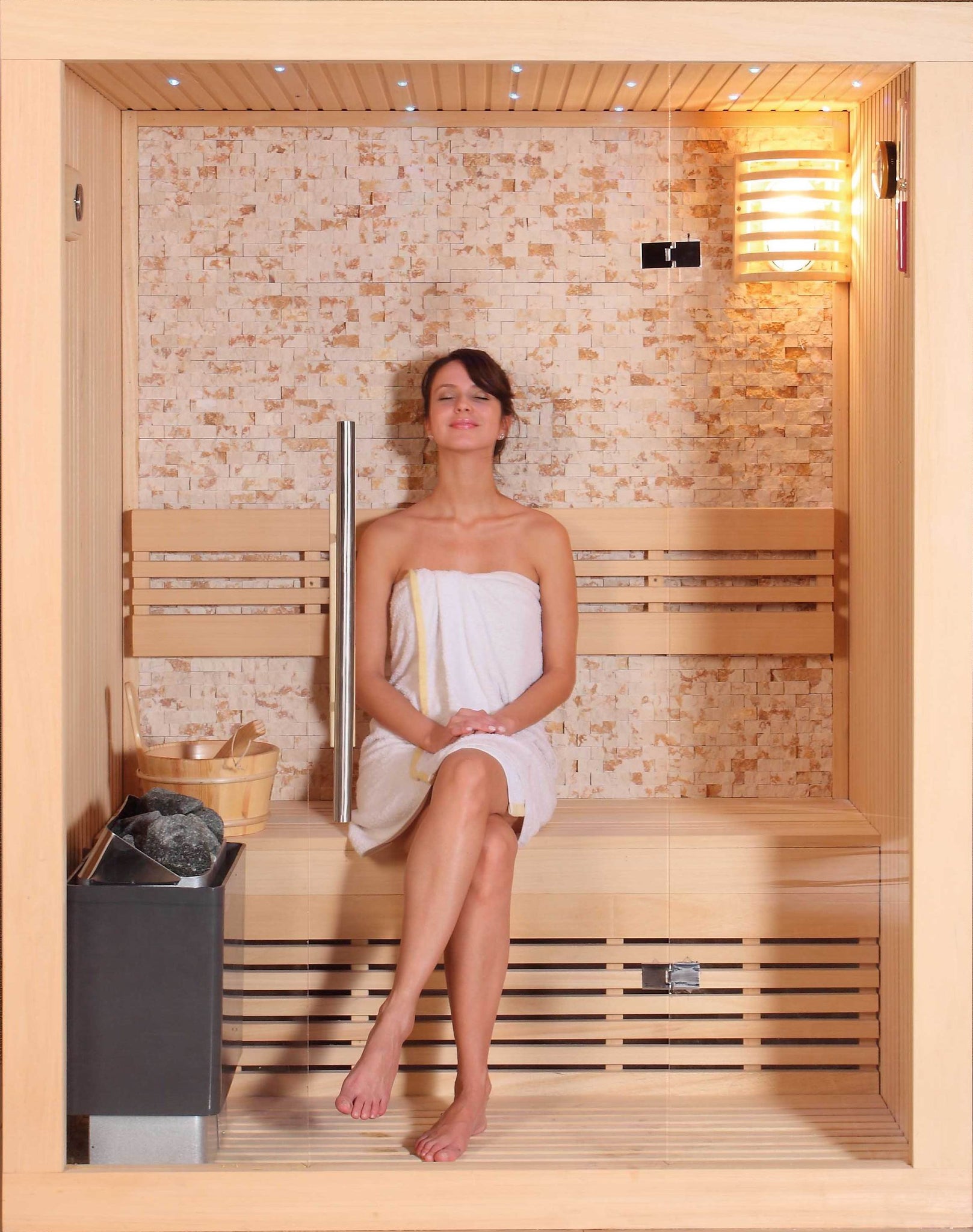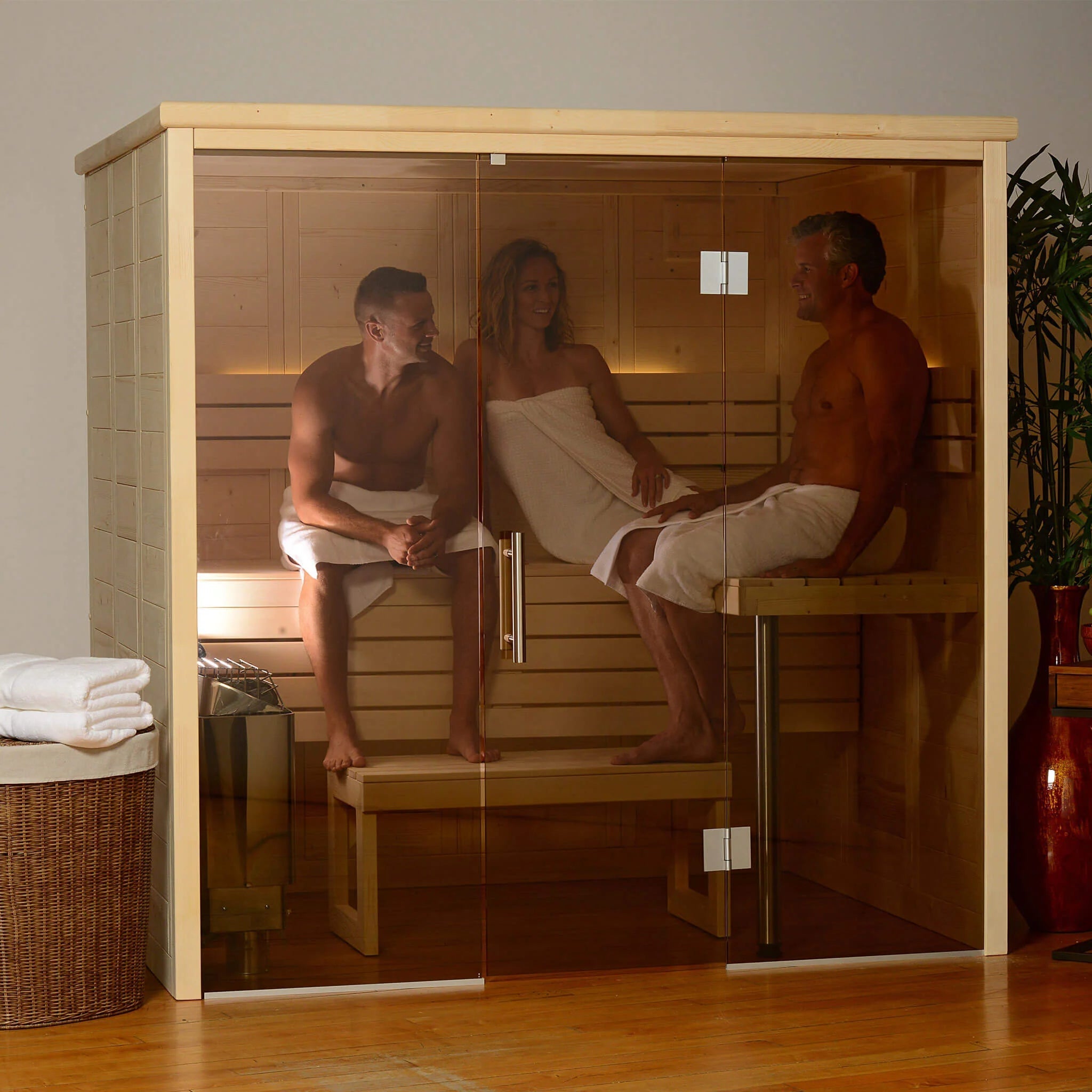Our Traditional Sauna Diaries
Our Traditional Sauna Diaries
Blog Article
An Unbiased View of Traditional Sauna
Table of ContentsExcitement About Traditional SaunaTraditional Sauna for BeginnersAbout Traditional SaunaThe Of Traditional SaunaThe 8-Minute Rule for Traditional Sauna
A lot of the weight shed in a sauna is water loss and is re-gained upon rehydrating. Without a doubt sauna can be a vital component of a healthy and balanced weight loss program. To look at the differences between typical and IR saunas, I will separate these right into proven, theoretical, and produced differences.Thus, the hottest point in the saunawhich goes to the ceiling straight above the sauna heateris normally between 185 and 190 F. Claims that a conventional sauna goes beyond 200 F is just not real and not suitable for electrical saunas offered in the US. The temperature for a far-infrared sauna is typically set between 120 and 140 F; however, unlike the typical sauna, the objective in and IR area is not to accomplish a heat.

When a typical sauna has actually been appropriately heated, the sauna wall surfaces are warm, the air temperature level has attained set temperature level and the rocks are incredibly heated. As an interesting side note, the heated wall surfaces and the rocks are producing far-infrared heat, integrated with the warmed air, to produce an "enveloping warmth".
Get This Report on Traditional Sauna
When the high temperature level is attained, the elements cycle on and off to maintain the high temperature level. Most typical sauna users take pleasure in putting water over the rocks to develop heavy steam to elevate sauna moisture levels. The benefits of putting water over the rocks include: making the room a lot more comfy, dampening the nasal passages, and enabling the use of aromatherapy by blending necessary oils with the water.

When the power gets in the body, it creates the body temperature level to raise and inevitably causes perspiration. In an infrared sauna it is very important for the emitters/heaters to remain on almost constantly. Since there is no mass of rocks to retain warmth, the sauna will cool down if the emitters shut down.
An Unbiased View of Traditional Sauna
As pointed out above, the sauna bather in an infrared area wishes to place himself in front of running emitters to get optimal advantage from the heat. The heating time for both rooms can be really various, relying on exactly how the areas are made use of. check my source For a typical sauna, a bather ought to permit 30-40 mins for the space to accomplish a preferred temperature and to effectively pre-heat the rocks.

A well created sauna will normally attain a temperature level of 150-160 F in about 30-40 mins (Traditional Sauna). For hotter temperature levels, the room may need to warmth for a longer duration. Once the room attains established temperature, the heating unit will cycle on and off, commonly operating regarding 50% of the moment. The shielded walls and the warmed rocks will certainly maintain the room hot and at secure temperature levels.
To some, 15 minutes was "lost" while the infrared power heated up the timber panels as opposed you could look here to heating a body, while others find a pre-heated room to be extra comfortable and believe a raised starting temperature is necessary to begin perspiring. The length of suggested usage for every space is around the very same (10-15 minutes per session); however, as a result of the reduced air temperatures and the capability to feel the results of infrared warm much faster than a conventional sauna, it is not uncommon for a person to invest a total amount of 20-30 minutes in an infrared sauna.
Some Of Traditional Sauna

The ordinary cost per kWH of electrical energy in the united state is roughly $0.11, so a 4.5 kW heater will certainly set you back approximately $.50 to these details run for one hour, if the heating system runs continually for one hour. Typically a sauna heating unit will certainly run for 75% of the very first hour and 50% of succeeding hours on since the elements cycle once the established temperature level is achieved.
A two individual far-infrared room is normally literally smaller sized than a conventional sauna, commonly about 4' x 4' or smaller. The IR heating system is commonly 1.5-1.7 kW using a 120 volt 15 amp plug-in solution. Given that the room can be used quicker than a sauna area, we will assume the room is used for to of an hour consisting of heat up time.
There is a seldom talked about difference in the social experience between the 2 spaces. While our culture has lost a few of the social advantage of the typical sauna experience, it can be very socially rewarding (Traditional Sauna). From household time in the sauna, to heart-felt discussions with loved ones, to sauna partiesthe traditional sauna experience can result in intimate socializing
Traditional Sauna Things To Know Before You Buy
The majority of higher end infrared spaces include tinted light treatment, sound systems and full-glass fronts.
Report this page